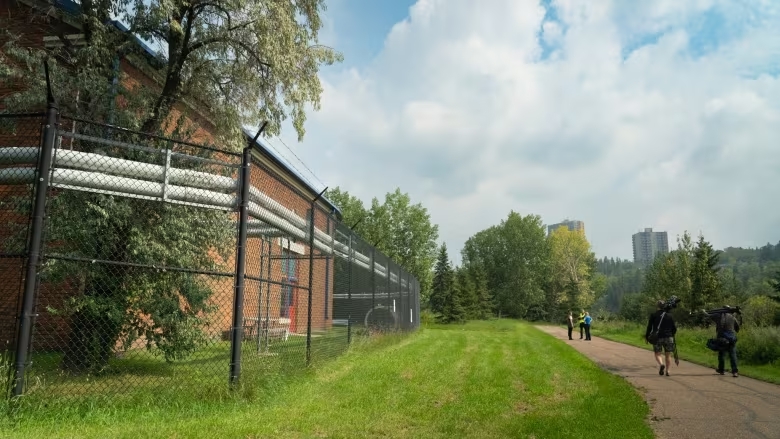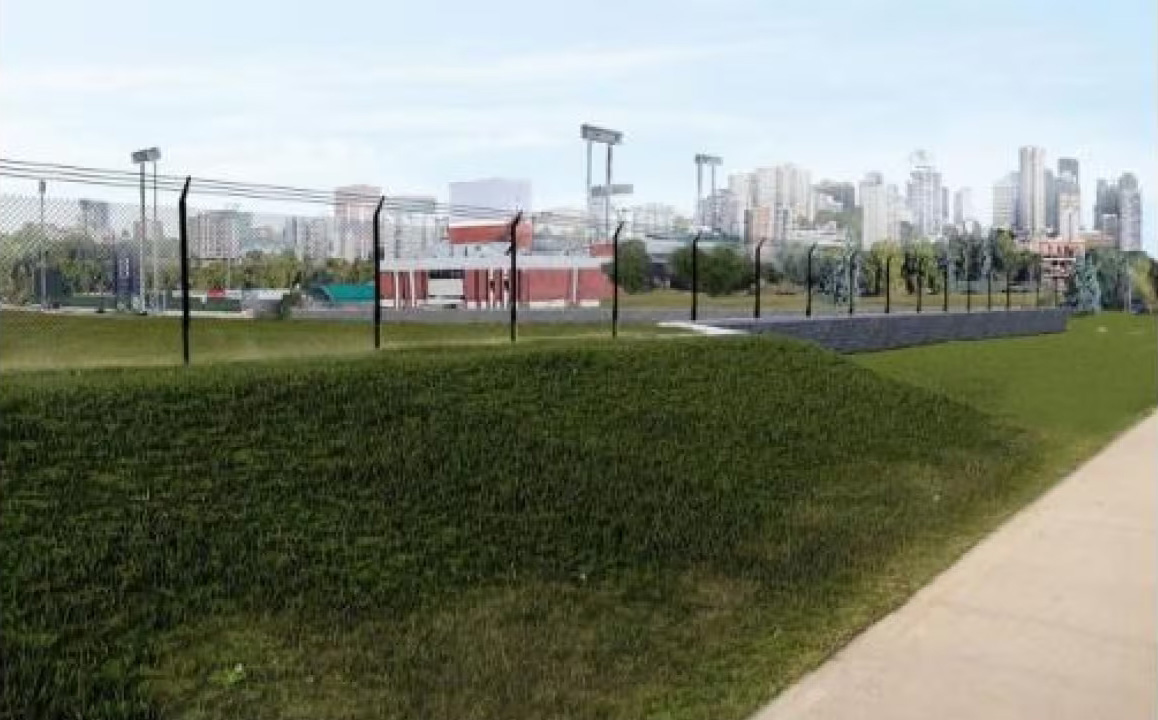
Edmonton's utility company, Epcor, plans to start building a concrete wall and berms around parts of its water treatment plants at Rossdale and E.L. Smith — both in the North Saskatchewan River floodplain — to help protect the region's water supply.
Construction on the flood mitigation project is slated to start next year with a budget of $65 million, with about $22 million coming from the federal and provincial governments.
The barriers are meant to limit potential damage to the facilities during a flood and to ensure a safe water supply to the 1.3 million people the plants currently serve in the Edmonton region.
Audrey Cudrak, Epcor's director of Edmonton's water treatment plants, said there's a growing risk of emergencies.
"Climate change modelling has shown that the risk of more extreme weather is increasing in the future, and that includes extreme floods," she said during a media availability Thursday.

If the membrane covering the two underground water reservoirs at Rossdale is contaminated, it would take months and cost tens of millions of dollars to fix. In addition, 90 communities would have boil water orders and rely on trucked-in water, Cudrak said.
The flood mitigation project — involving some 550 metres of wall north of the mixed-use trails along the river — has been five years in the making.
Barriers on the south side of Rossdale are expected to be one to two metres in height, while a grass-covered embankment around E.L Smith will be approximately two metres high and the flood wall from two to 4.5 metres high.
To prepare for possible flooding, Epcor has stop-gap measures like demountable flood barriers, tiger dams, and sandbags under its emergency response plans.
The location of the flood mitigation barriers within the river valley needs final approval from city council. Epcor will present the project details to council's utility committee at a meeting Sept. 5.
Anne Stevenson, city councillor for Ward O-day'min, said the project is vital to the health of communities.
"Preserving access to clean drinking water for over a million people in Edmonton and surrounding communities during the flooding emergency is so critically important," Stevenson said.
"They come at a cost, but a significantly smaller cost doing it now rather than waiting for the worse to come."
Stevenson said she plans to ask Epcor representatives at the upcoming meeting whether the project can be expedited.
Cudrak acknowledged the growing sense of concern with environmental disasters happening around the globe.
"The public, as well as utilities, have increased their sense of urgency around this. It's certainly becoming more obvious, more apparent that unpredictable weather is becoming more common."
Epcor has been consulting local communities and First Nations, said Jed Johns, manager of government and Indigenous relations with the company.
The site is near the traditional burial site at the Rossdale Power Plant.
Johns said they've engaged 30 groups and will have Indigenous monitoring.
"The entire site is sensitive, we consider that sensitive," Johns said. "[We'll] have it monitored by Indigenous nations and communities when we're doing any excavations here on site."
The project would also require cutting down 557 trees, 77 of those being mature trees, Epcor said.
The company said it has a long-term management plan that will result in naturalizing more vegetation and wildlife habitat than they remove.
The Edmonton River Valley Conservation Coalition questions the approach to holding back river in a floodplain, arguing that concrete berms and walls make flooding worse.
Kristine Kowalchuk with the coalition said many other cities are implementing a "slow water approach" that allows the landscape to absorb the water, which is "what a floodplain is meant to do," Kowalchuk wrote in an email statement to CBC News Thursday.
"This nature-based approach is cost-effective, protects wildlife corridors, protects vegetation that holds up banks and prevents drought, and enables restoration of habitat rather than destroying more."